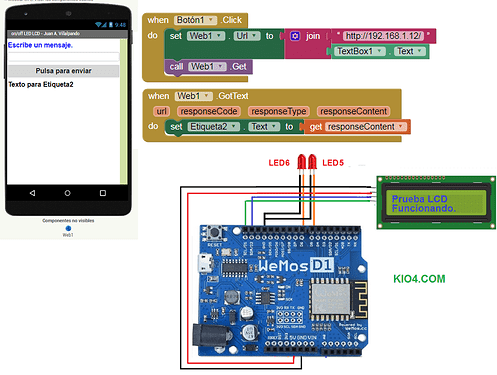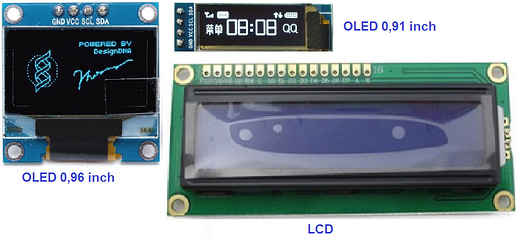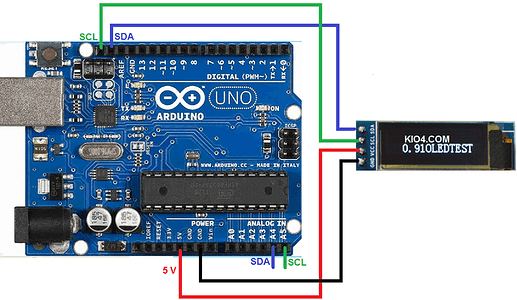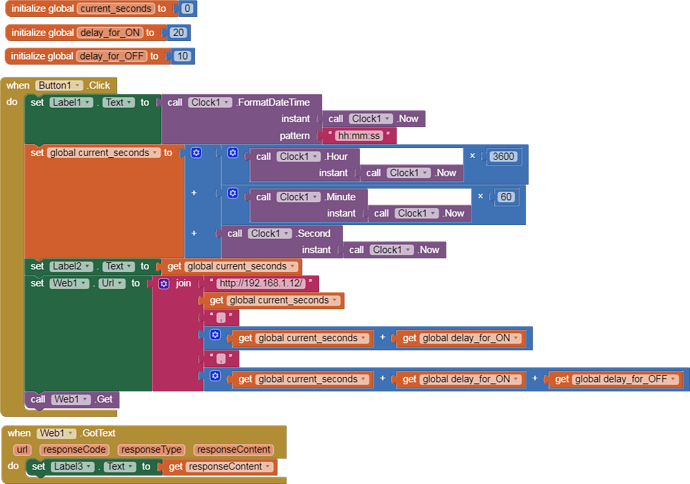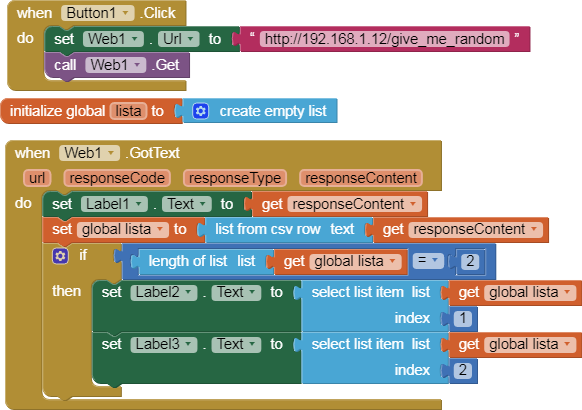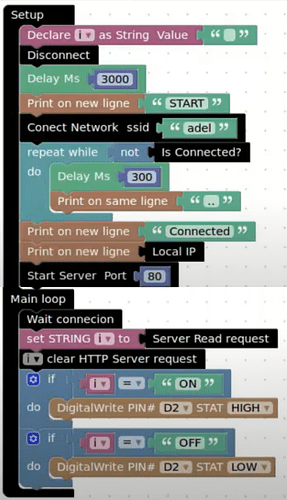Hello friends,
1.- Send message and view it on an LCD screen.
1.- You write a message in TexBox1 and it is sent by WiFi to ESP8266, that message is shown on the LCD screen.
2.- If you write on5, off5, on6, off6, LEDs 5 or 6 turn on/off.
```
// Juan A. Villalpando.
// KIO4.COM
// Send a message
// from App Inventor
#include <ESP8266WiFi.h>
const char* ssid = "Name_Net_WiFi";
const char* password = "Password_WiFi";
// Static IP.
IPAddress local_IP(192, 168, 1, 12);
IPAddress gateway(192, 168, 1, 1);
IPAddress subnet(255, 255, 255, 0);
#define LED5 D5 // LED in pin 5
#define LED6 D6 // LED in pin 6
#include <LiquidCrystal_I2C.h>
int columns = 16;
int rows = 2;
LiquidCrystal_I2C lcd(0x27, columns, rows);
// LiquidCrystal_I2C lcd(0x3F, columns, rows);
WiFiServer server(80);
void setup() {
Serial.begin(115200);
pinMode(LED5, OUTPUT);
pinMode(LED6, OUTPUT);
lcd.init();
lcd.backlight();
// Set Static IP.
WiFi.config(local_IP, gateway, subnet);
// Connection to WiFi
Serial.println();
Serial.print("Connecting with ");
Serial.println(ssid);
WiFi.begin(ssid, password);
while (WiFi.status() != WL_CONNECTED) {
delay(500);
Serial.print(".");
}
Serial.println("Connected with WiFi.");
// Start WebServer.
server.begin();
Serial.println("WebServer started.");
// This is IP of WebServer
Serial.print("IP of WebServer: ");
Serial.print("http://");
Serial.print(WiFi.localIP());
}
void loop() {
// Check if a client has connected.
WiFiClient client = server.available();
if (!client) {
return;
}
Serial.print("New client: ");
Serial.println(client.remoteIP());
// Wait for the client to send data.
while(!client.available()){ delay(1); }
/////////////////////////////////////////////////////
// Read information of client.
String req = client.readStringUntil('\r');
Serial.println(req);
req.replace("+", " "); // Spaces without +
req.replace(" HTTP/1.1", ""); // this delete HTTP/1.1
req.replace("GET /", ""); // this delete GET /
lcd.clear(); // Borra pantalla.
lcd.setCursor(0, 0); // Start cursor
lcd.print("Mensaje");
lcd.setCursor(0,1); // Next row.
lcd.print(req);
// Make the customer's request.
if (req.indexOf("on5") != -1) {digitalWrite(LED5, HIGH);}
if (req.indexOf("off5") != -1){digitalWrite(LED5, LOW);}
if (req.indexOf("on6") != -1) {digitalWrite(LED6, HIGH);}
if (req.indexOf("off6") != -1){digitalWrite(LED6, LOW);}
//////////////////////////////////////////////
// Página WEB. ////////////////////////////
client.println("HTTP/1.1 200 OK");
client.println("Content-Type: text/html");
client.println(""); // Important.
Serial.print("Client disconnected: ");
Serial.println(client.remoteIP());
client.flush();
client.stop();
}
```
-
In this code I use static IP.
-
Utilizo:
